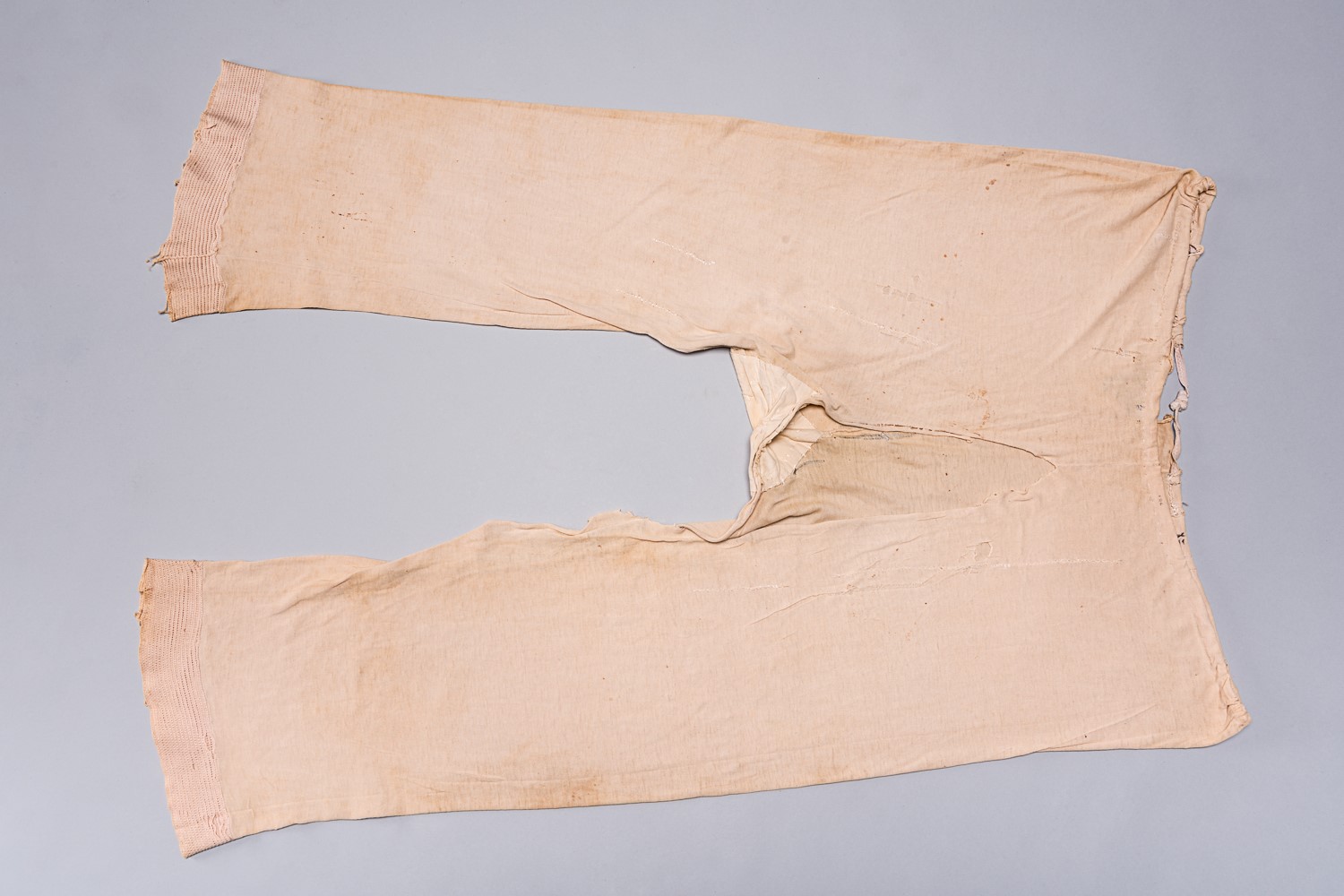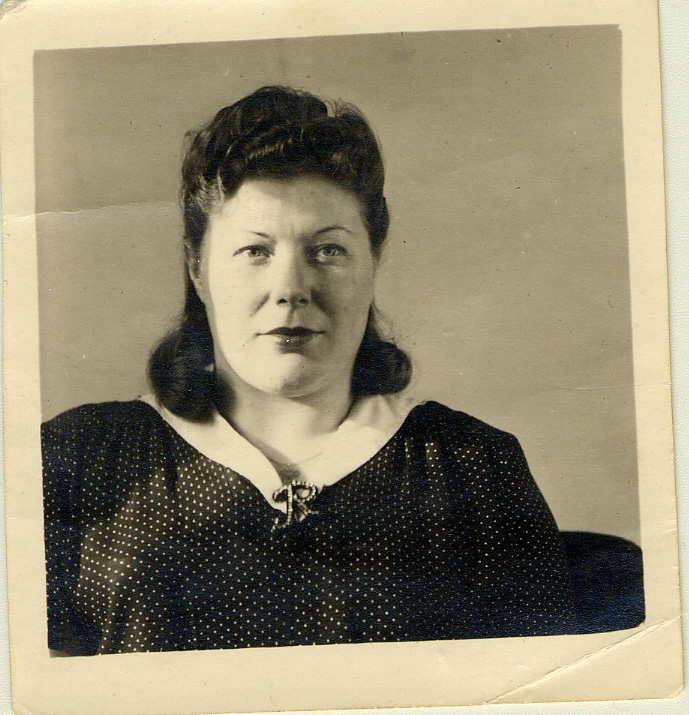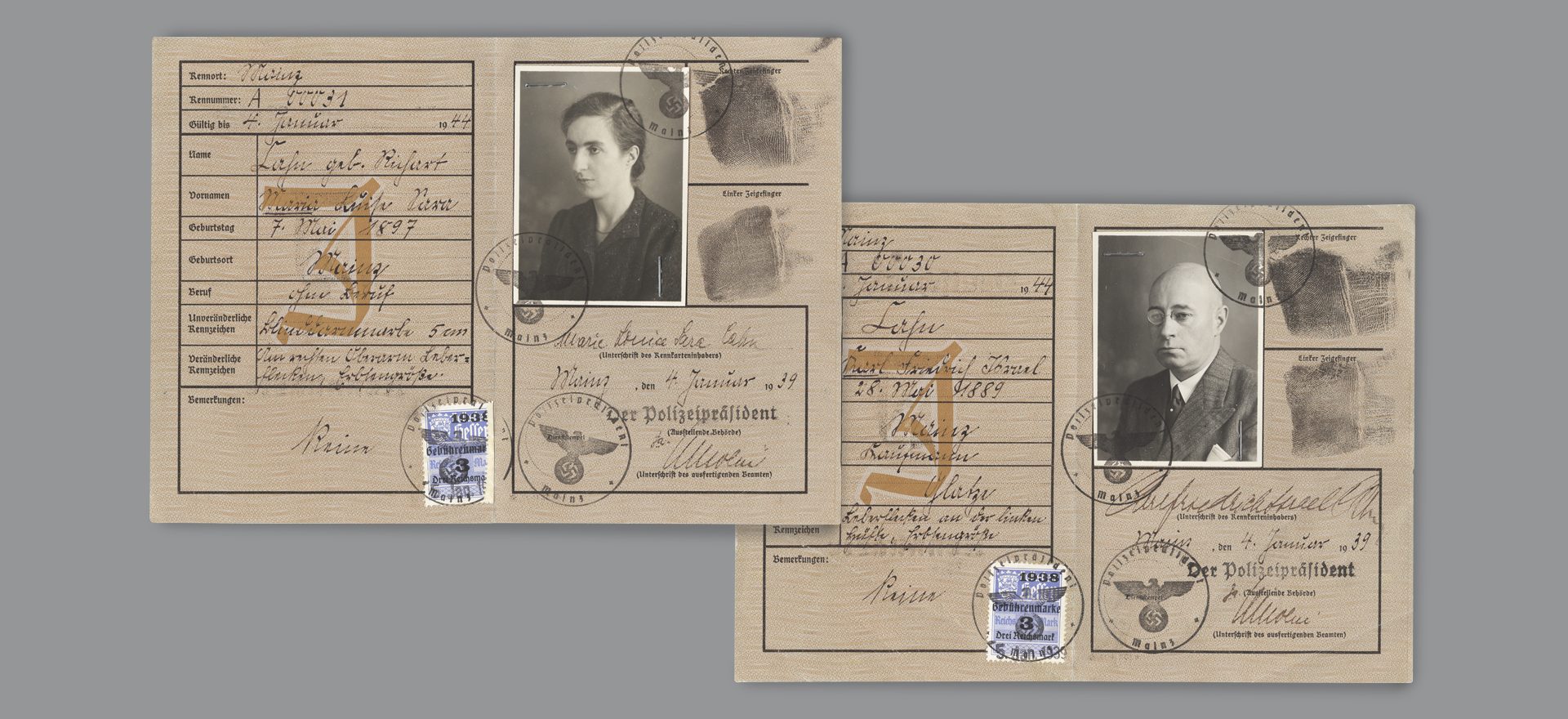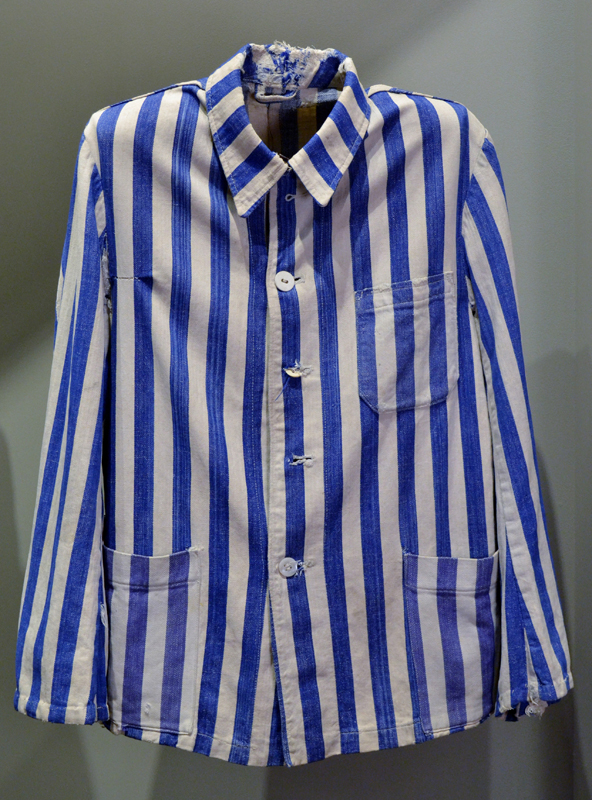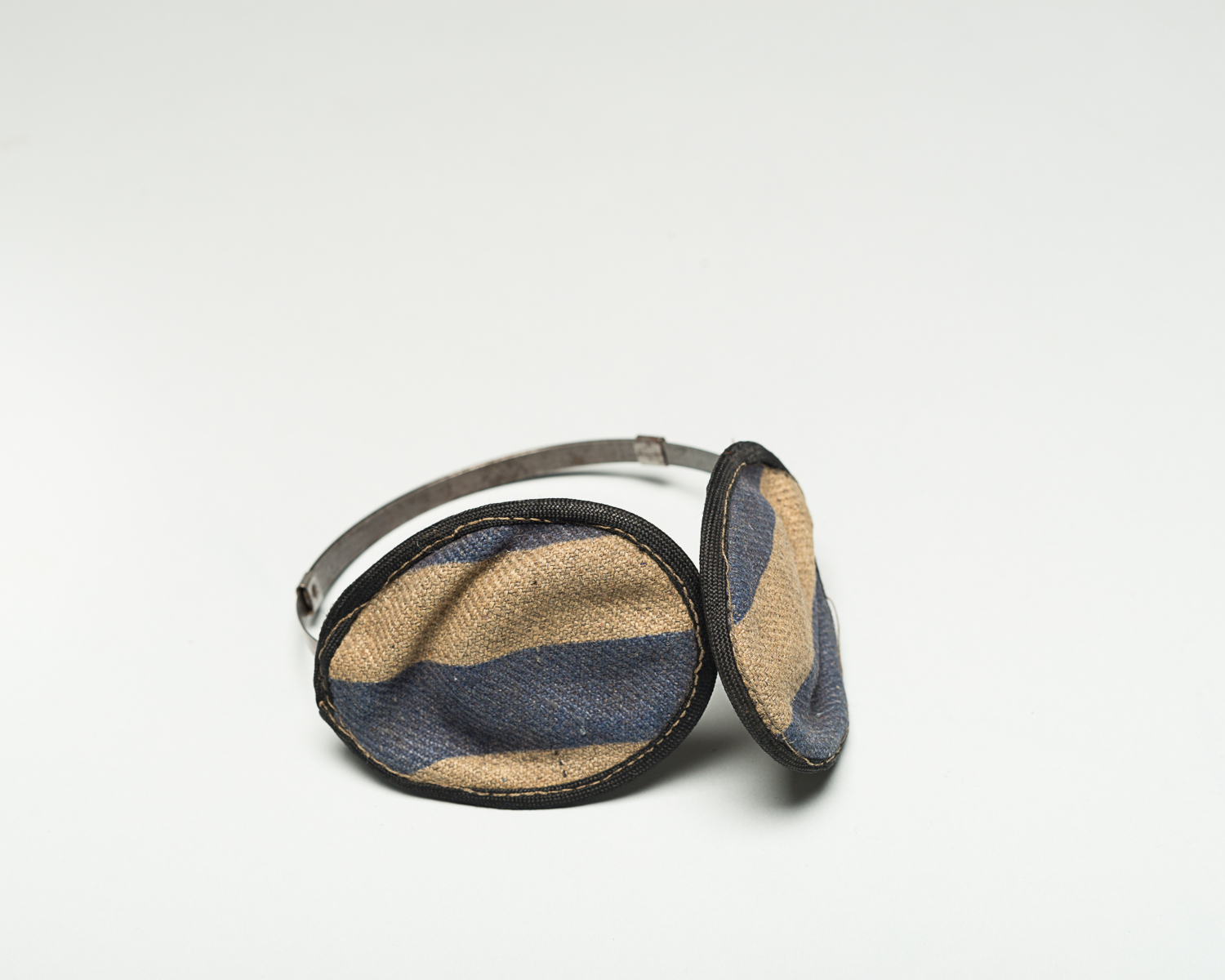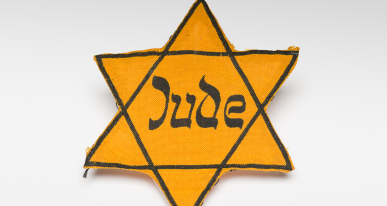Pola Reich wore these beige cotton undergarments during her internment in the Majdanek camp. She wore them under her striped uniform.
Pola’s Detention during the War
Pola was detained in the Majdanek camp between 1943 and 1944. When the Soviet army was approaching in the summer of 1944, Pola was deported to the Czestochowa ghetto. She was wearing these undergarments, as pants, up until and during her liberation in November 1944.
Undergarments: a Memento of her Life during the Holocaust
Pola married in 1947 and immigrated to Canada in 1950. She had three children, including Gina who, at age 7, discovered the undergarments. Disgusted by their appearance, she asked her mother what they were. Pola explained that she wore them in a Nazi concentration camp. Her story made a strong impression on her child, who realised what her mother had been through.
Gina Eskenazi donated her mother’s undergarments to the Montreal Holocaust Museum in 2009, “so that its importance will live on for future generations of people who value dignity and human life.”
This project is part of the implementation of the Plan culturel numérique du Québec.

